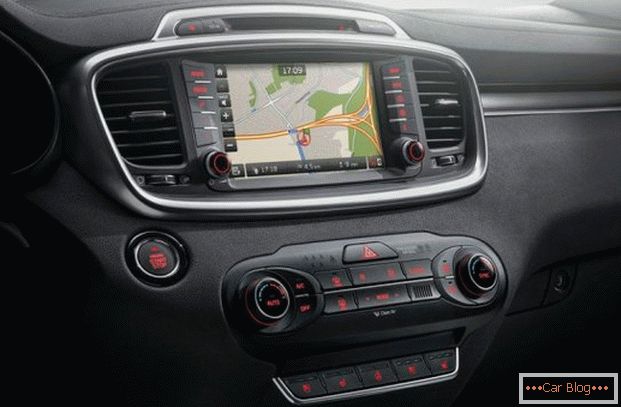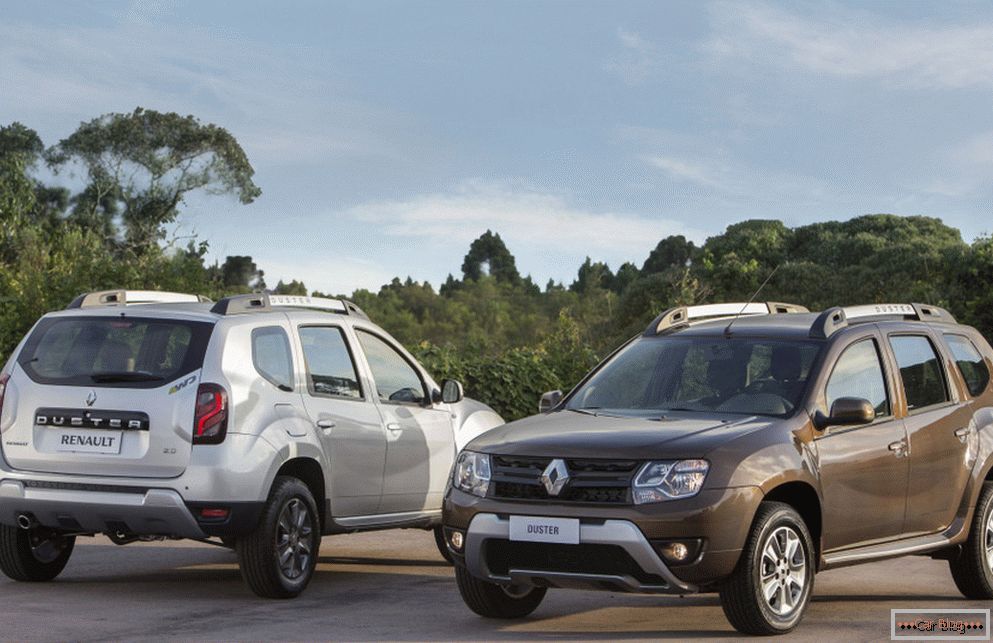The method of cooling the water of an internal combustion engine has long since sunk into oblivion, giving way to advanced technologies for removing heat from the cylinder block. In this case, the fluid used in the vehicle's cooling system also went through several evolutionary stages of conversion. Work on improving such a coolant involved in all countries, including the Soviet Union.
The result of the works was the invention of the brand of Soviet antifreeze, which received its own name "Tosol". The scope of its application were domestic cars of the time. Since there were no other automobile anifreezes on the shelves of the stores, citizens gradually began to call all automobile coolants “antifreeze”. A similar example is the appearance of Xerox machines, after which all printed copies made by the apparatus of any company began to be called “copiers”.
However, the difference between antifreeze or antifreeze liquids was later identified as between domestic products based on mineral additives and foreign products.
Content
- 1 Chemical basis for cooling
- 2 Differences between types of liquids
- 3 What is the difference between antifreeze and antifreeze during cooling
- 4 The use of cooling materials in modern cars
- 5 Impact on vehicle structural elements
- 6 Color marking
Chemical basis for cooling
The correct choice of antifreeze will help protect the car from damage, because cooling problems according to statistics of up to 40% are directly or indirectly involved in the failure of a car. In the service book of the car or instructions for its operation are the recommended parameters for the choice of coolant.
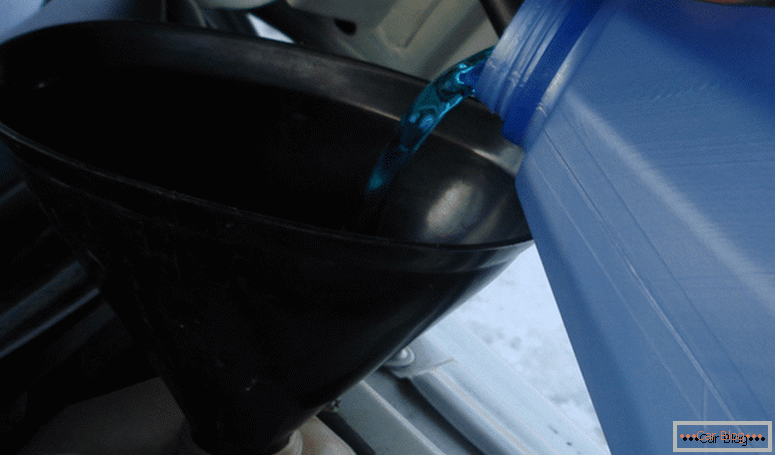
Dolph Antifreeze
The basis for all its types is ethylene glycol. And what distinguishes antifreeze from antifreeze is mainly determined by various types of additives:
- inorganic additives are typical for domestic refrigeration products, such as Tosol; the composition of such additives is formed mostly from nitrite, nitrate and silicate salts;
- organic additives are used in carboxylate fluids; they are combed with salts of organic acids;
- mixed type coolant in its composition has both types of salts, but most of it is organic additives.
Differences between types of liquids
The most popular for use by domestic motorists are the first two types. Mineral antifreezes are labeled with a classification G11and organic - G12. An additional difference between antifreeze and antifreeze can be identified in terms of operation, because the use of inorganic substances is limited to two years of operation, or 50 thousand kilometers. After that, mineral additives are produced.

Tosol
Organic salts can work up to 5 years without problems or 250 thousand kilometers. They perfectly cope with their task in the new engines. The mixed type of antifreeze is combined with both types of liquids. To a greater extent it has the characteristics of organic antifreeze.
See also: Checking the thermostat for performanceWhat is the difference between antifreeze and antifreeze during cooling
With the help of mineral salts, traditional antifreeze forms a protective film on the metal surface in the channels over the entire area. A positive feature of this process is a fairly high corrosion protection of the metal. A thick layer reaching half a millimeter prevents the appearance of oxidation.
This scheme has the disadvantage of weak heat transfer. After all, this layer reduces the heat from the motor. Due to the increase in temperature, the power of the power plant decreases, fuel consumption increases, and the engine components wear out faster.
Organic antifreeze additives work selectively. They create a protective layer only at points of corrosion, not covering the entire surface of the channels. The efficiency increases.
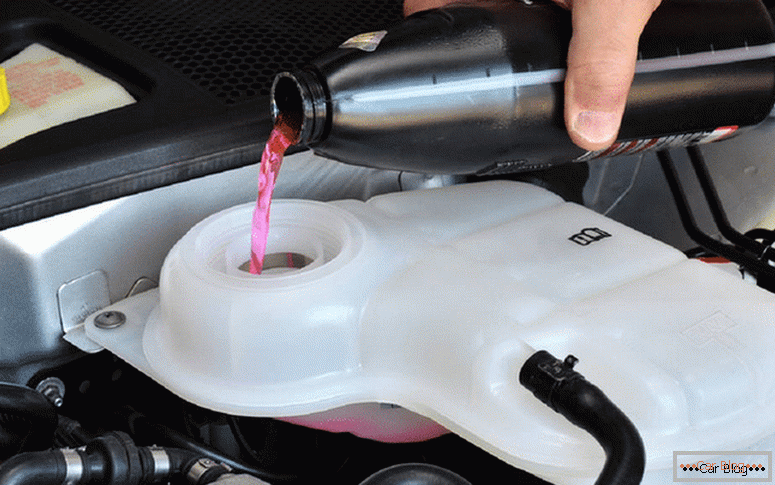
Topping up the coolant of the corresponding color
Due to this selective action, it is possible to achieve low consumption of additives, therefore, the effective operation of the fluid is prolonged in time and mileage.
The use of cooling materials in modern cars
Most modern cars use aluminum elements in the design of cooling systems. Cylinder blocks are also made of such a metal; radiators are found from aluminum alloys. This contributes to a higher degree of heat transfer. Also often the liquid warms up to temperatures well above 100C, but antifreeze and other substances with mineral salts retain their characteristics up to 105C, higher temperatures can lead to boiling, foaming and depriving of their protective characteristics.
Антифризы, использующие organic компоненты легко переносят разогрев до 135C. At the same time, anti-corrosion and other protective properties are preserved in them.
Coolants render transfer pumps out of service due to cavitation processes. The surface of the blade is surrounded by bubbles. In the process of pumping through the system, they burst and form small water hammer, contributing to the destruction of these blades.
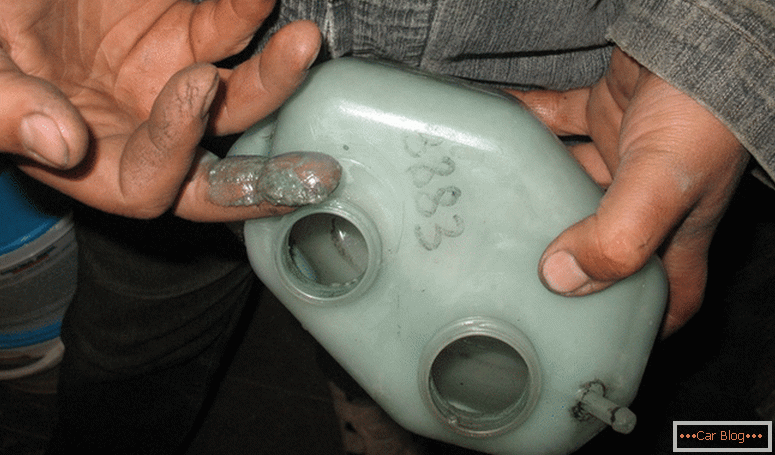
The consequences of poor coolant
Carboxylate antifreezes are not without such a flaw. But, they affect the parts of the pump to a lesser extent. This extends its service life sometimes by one and a half to two times. For the same reason, cylinder liners are also maintained longer with "organic".
See also: The principle of operation of the engine cooling radiatorImpact on vehicle structural elements
To understand that it is better to antifreeze or antifreeze, it is necessary to pay attention to the consequences of the work of different liquids. Mineral-containing substances behave more aggressively towards plastic, silicone and rubber elements. Such components need to be replaced more frequently than during the use of carboxylate solutions.
The silicate and phosphate components of the domestic refrigerants lead to the formation of gel inclusions and solid insoluble precipitates. Such undesirable components clog the passageways until the thermostat is blocked. The consequences may affect the operation of the motor.
Among organic additives there are no substances forming precipitates or gels.
This makes it possible to operate the car in a working mode for a long time and effectively. Also, the radiator is not contaminated, and no salts are deposited in its tubes. The state of this unit does not require regular flushing of scale deposits of salt deposits.
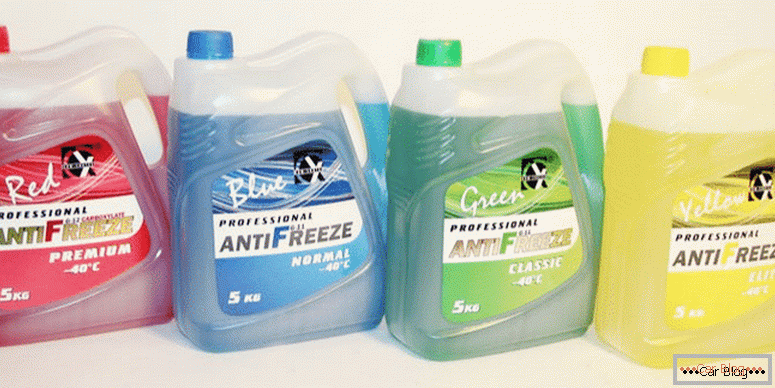
Types of Antifreeze
In addition to exposure to the car, liquids with organic additives are safer for the environment. They have a toxicity class lower than mineral components. Due to long-term operation and rare replacement, the need for recycling is reduced, which also has a positive effect on the environment.
Color coding
The ethylene glycol solution has no color. In order to increase the information content in the recognition of various types of antifreeze manufacturers use staining. For Japanese companies that make this product, color gradation characterizes the freezing point:
- red color corresponds to crystallization at -30WITH;
- green staining says about -25WITH;
- yellow liquid freezes at -20WITH.
When choosing the maximum freezing temperature, it is necessary to take into account that the antifreezes that are more resistant in this parameter also have a lower heat emission. In Subaru manufacturers initially pour green. Tayota their cars fills with red liquid.
In the European graduation, the trend setters are Germans. By their classification, the color indicates the class of access to the car. At the same time, the crystallization parameter on all antifreezes is set at the level of -37.WITH. Различия заключаются в структуре присадок. Для минеральных солей с маркировкой G11 принято green окрашивание. Обозначение карбоксилатных растворов с G12 можно отличать по красному цвету.
Although European products do not have high heat transfer, but This is solved by simply adding a small amount of distilled water.. The color will fade a little, but the temperature will be drained more efficiently.
Mixing fluids with different properties is not recommended. It is necessary to add only that type which is filled in in system.

